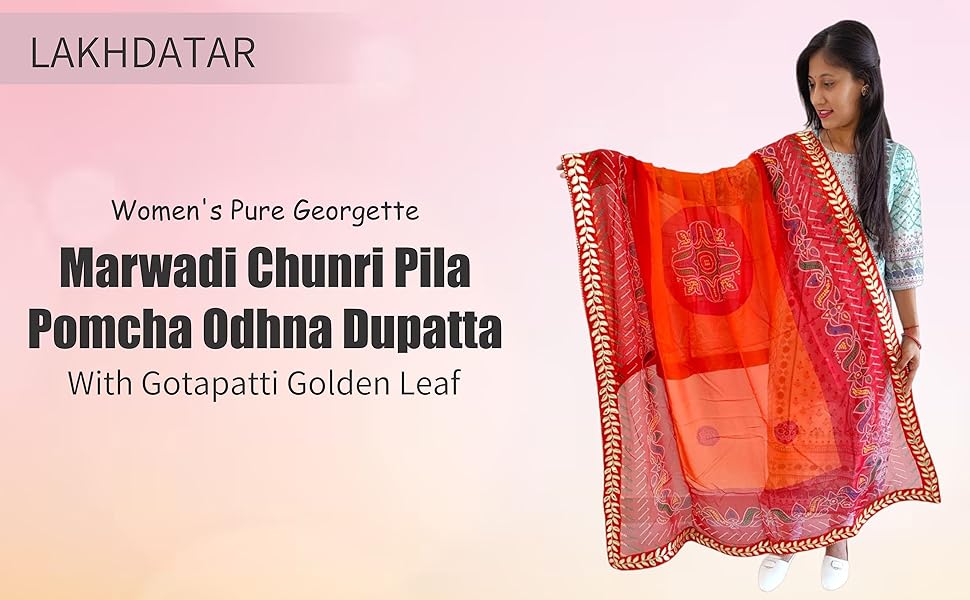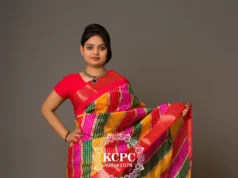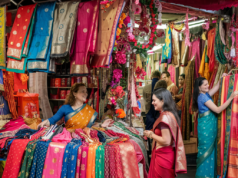I still remember the first time I saw a pila chunri. It was at my cousin’s wedding in Rajasthan, where the air was thick with turmeric and the scent of marigolds. Her mother-in-law draped the yellow cloth over her head – not just any yellow, but that specific shade that seems to capture sunshine itself. The tiny mirrors caught the light as she moved, like stars winking against a golden sky.
Pila chunri, the vibrant yellow scarf adorned with intricate patterns, holds a special place in South Asian textile traditions. This iconic piece of cloth is more than just an accessory—it represents stories told through generations, celebrations that mark life’s milestones, and the quiet pride of women who preserve these traditions.
The Artisans Behind the Beauty
Behind every pila chunri are hands that have worked this craft for decades. I once visited a small workshop outside of Jaipur where I met Lakshmi, a chunri artist in her sixties. Her fingers, stained yellow from years of working with dyes, moved with remarkable precision as she tied minuscule knots in the fabric.
“My grandmother taught my mother, and my mother taught me,” she told me with a smile that revealed her pride. “Each dot you see here is a moment of patience.”
The process is mesmerizing:
The fabric is folded between her weathered fingers and bound with thread in patterns she knows by heart. No templates, no measurements—just the wisdom stored in her hands over decades.
When dipped into the yellow dye, there’s always that moment of anticipation. Will the pattern emerge as intended? Even after forty years, Lakshmi says she feels the same excitement every time.
The most moving part is watching these artisans collaborate. Three generations often work together, sharing stories as their hands create beauty. The youngest learning, the oldest guiding, the knowledge flowing between them like the dye through cloth.
More Than Just Fabric
What makes pila chunri truly special isn’t just its visual appeal but how deeply it’s woven into life’s most meaningful moments.
During my travels through Gujarat, I met Meena, who showed me her wedding chunri, carefully preserved for twenty-three years. “When I was sad in my first years of marriage,” she confided, “I would hold this and remember the blessings it carried.” The cloth had absorbed her tears during difficult times and witnessed her joy when her first child was born.
In another village, I watched as women gathered to prepare chunris for the spring Basant festival. Their laughter echoed as they worked together, occasionally breaking into folk songs that celebrated the changing seasons. One grandmother told me, “When we wear yellow for Basant, we become part of the landscape. We are the mustard fields.”
Finding Meaning in Modern Times
Today, young designers like Priya Sharma are reimagining pila chunri for contemporary wardrobes. I visited her studio in Mumbai, where traditional artisans work alongside fashion graduates.
“My grandmother wore a pila chunri every day of her married life,” Priya told me, showing me photos of the woman who inspired her career. “I want people who wear my clothes to feel that connection to something authentic.”
What struck me in her workshop wasn’t just the beautiful fusion garments but the relationships between the young designers and elderly artisans. They were creating something new together while honoring something ancient.
For so many women, the pila chunri represents resilience. It has survived industrialization, changing fashion trends, and cultural shifts. Perhaps because it carries something essential—the warmth of community, the dignity of craftsmanship, and the beauty of traditions that adapt without breaking.
Whether caught in a moment of celebration, carefully stored in a bride’s trousseau, or reimagined on a modern runway, the pila chunri continues to tell our stories—connecting us across generations with threads of gold and the patient work of human hands.












